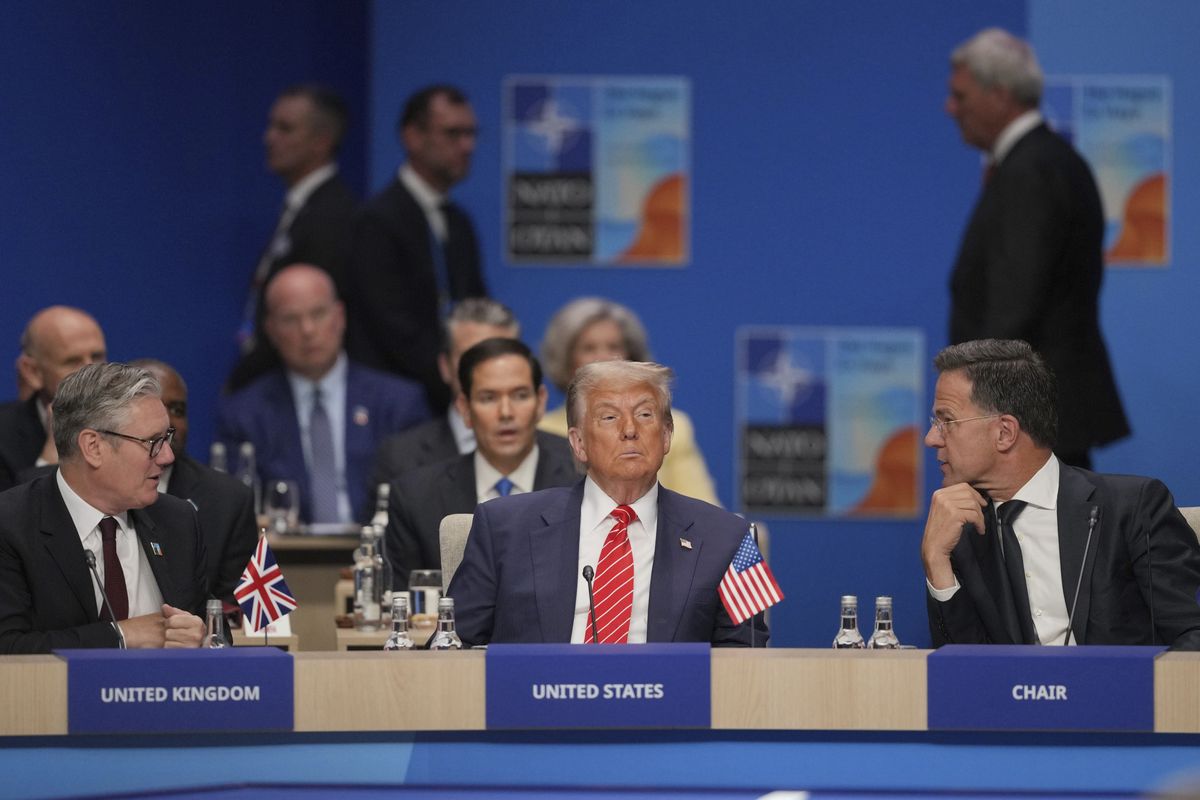At 12:00PM on Friday, Jan. 20, the nuclear “football,” a briefcase containing the launch codes for the U.S. nuclear arsenal, was passed to a new Commander-in-Chief. Donald Trump enters the Oval Office at a time of dual necessity: U.S. nuclear forces, which include 6,800 nuclear weapons, are in need of modernization, but U.S. nuclear policy for the last 40 years has overseen a decreasing U.S. nuclear stockpile.
Nuclear weapons continue to play an essential role in U.S. security. According to a Senate Armed Services Committee report released last week, “The essential requirement of U.S. nuclear policy is to deter nuclear attack against the United States and its allies. U.S. nuclear weapons also play an important role in assuring U.S. allies, preserving peace, and preventing nuclear coercion. This is done by maintaining a highly survivable, fully exercised, and ready nuclear force that can withstand a surprise attack and carry out presidential orders.”
Although the U.S. maintains the second-largest nuclear stockpile in the world, many of the weapons and launch systems are significantly outdated, leading to question about their efficacy. Policymakers have voiced a need for nuclear modernization and the blueprint for such a policy has already been drafted. Former President Barack Obama’s final defense budget proposal earmarked funding for the first stages of modernizing all three legs of the nuclear triad, including, a new ballistic missile submarine, a new strategic bomber and nuclear-capable cruise missile, and a new Intercontinental Ballistic Missile, as well as funds to recapitalize critical nuclear weapons manufacture and research facilities. In total, these programs are expected to cost 1 trillion dollars over 30 years, but are not expected to exceed 5 percent of annual defense spending.
The Trump administration has yet to take any formal nuclear policy stances, but key cabinet members have voiced their opinions on U.S. nuclear policy. In responding to advance questions before his Senate Armed Services Committee confirmation hearing, Secretary of Defense James Mattis’ said, “My view of the Department of Defense’s strategic priorities is that we must first maintain a safe and secure nuclear deterrent.” In the same responses, Mattis also advocated for the modernization of all three legs of the triad.
During his confirmation hearing, Rex Tillerson, Trump’s nominee to be secretary of state, publicized his views of upholding both a strong nuclear deterrent and the international goal of nuclear arms reduction, stating “as we're pursuing nonproliferation, then we're also pursuing the enforcement of important agreements like New START, that we have to also approach those from a position of strength.”
Trump’s own comments on nuclear policy have been contradictory at times, but in sum support modernization and arms control in tandem. In tweets, Trump has advocated for the expansion of U.S. nuclear forces, and in an interview with MSNBC he said "Let it be an arms race, we will outmatch them at every pass and outlast them all.” Though he has also suggested that he could negotiate a new arms deal with Russia in return for lifting U.S. sanctions on Moscow.
In addition to the early views put forth by Trump and some of his cabinet members, nuclear modernization has received bipartisan congressional support, and many experts believe its implementation is long overdue. Tom Karako, a senior fellow at the Center for Strategic and International Studies, told The Cipher Brief, “After the end of the Cold War, reductions in the role and numbers of nuclear weapons also resulted in an extended procurement holiday—indeed, too extended a holiday. As a result, today’s weapons and delivery systems are the oldest in U.S. history.”
Though the U.S. is preparing for one of the largest nuclear investments in its history, the objective does not rule out pursuing another longstanding U.S. policy objective, arms control and disarmament. Hans Kristensen, Director of the Nuclear Information Project at the Federation of American Scientists told The Cipher Brief “The modernization program started by the Obama Administration and approved by Congress has built into it a number of reductions that will happen even without new arms control agreements.” However, additional cuts outside of the New START treaty are contingent on Russia’s compliance.
It is important to remember that modernization and arms control are not mutually exclusive, and in fact have been pursued in tandem successfully in the past. Kristensen says “history tells us that the combination of a Republican president and a conservative Congress ironically is likely to create additional reductions in nuclear arms.” If Trump wishes, he can oversee a policy that will strengthen America and its allies, while still reducing U.S. nuclear stockpiles.
Will Edwards is an international producer at The Cipher Brief. Follow him on Twitter @_wedwards.











